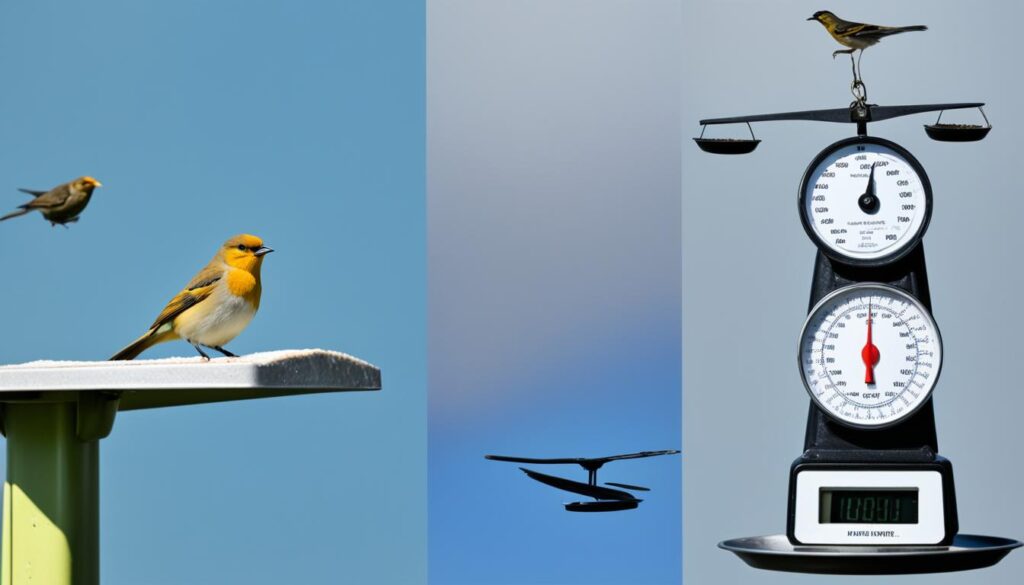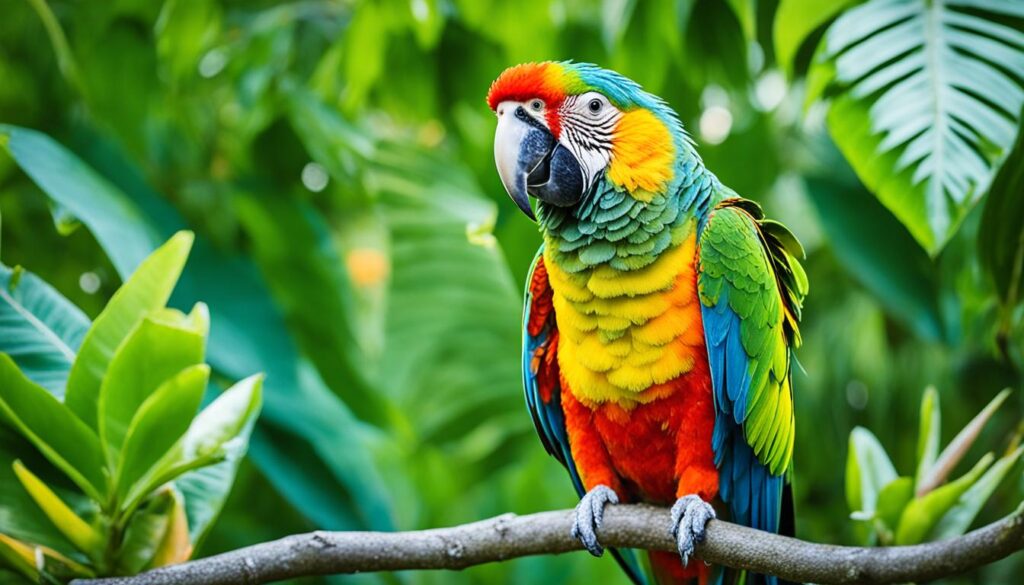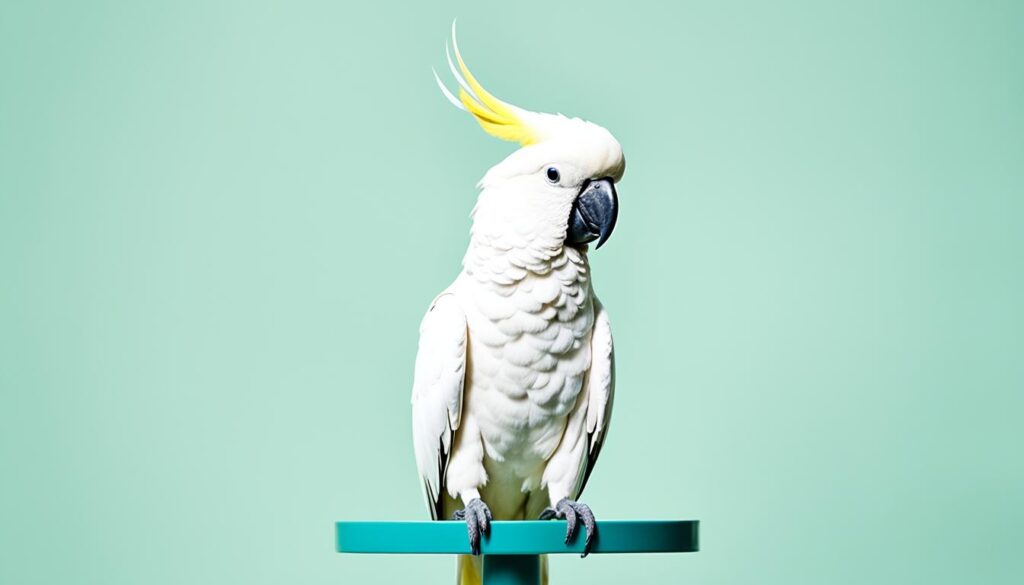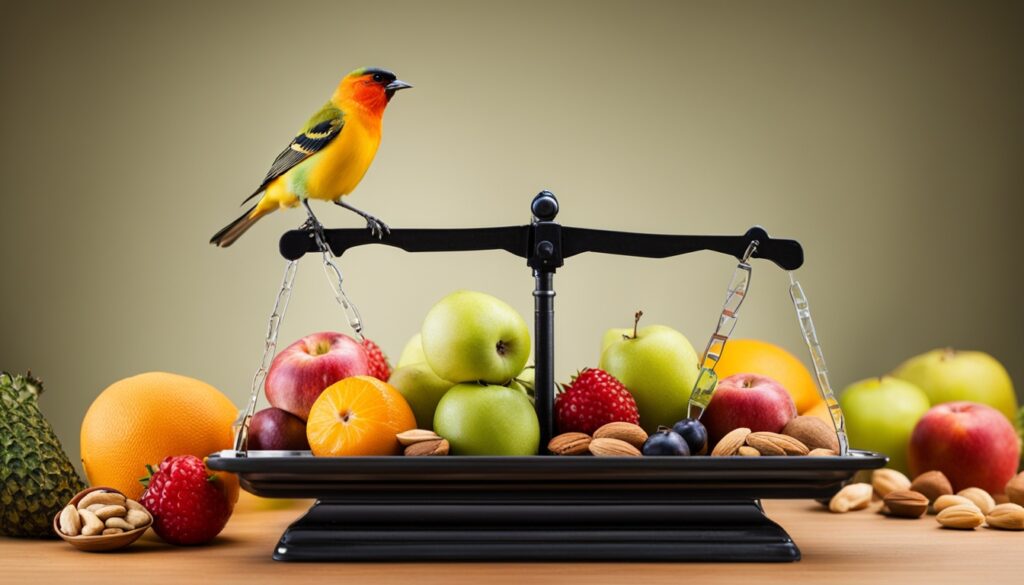Did you know that the average weight of a Hyacinth Macaw can reach a staggering 1,355 grams? That’s about the same as 1,355 U.S. quarters! This comprehensive article explores the fascinating topic of bird weights, delving into the surprising range of sizes across different avian species, from the diminutive hummingbird to the massive ostrich.
Understanding the weights of our feathered friends is crucial for monitoring their health and well-being. Whether you’re a bird enthusiast, a pet owner, or simply curious about the natural world, this article will take you on a journey through the diverse world of avian mass, revealing insights that may surprise and delight you.
Key Takeaways
- The weight of birds can vary dramatically, from just a few grams for hummingbirds to over 1,000 grams for large macaws.
- Factors like diet, habitat, and subspecies can significantly impact a bird’s weight.
- Monitoring a bird’s weight is essential for detecting potential health issues and ensuring their overall well-being.
- Consulting a veterinarian is recommended if you notice any sudden or significant changes in your bird’s weight.
- The article provides detailed information on the average weights of common pet bird species, from finches to cockatoos.
Introduction to Bird Weights
The Importance of Monitoring Bird Weights
The weight of a bird is a crucial indicator of its overall health and well-being. As caged birds and clipped parrots often get less exercise than their wild counterparts, companion bird obesity can be a common problem in domestic birds. Regularly weighing your feathered companion can help you detect any significant weight changes, which can be an early sign of an underlying health issue. Exotic birds are skilled at hiding illness, so monitoring your bird’s weight on a routine basis is the best way to identify potential problems before they become serious.
Birds can vary considerably in size, from the world’s smallest bird, the bee hummingbird at 5 centimeters (2 inches) long, to the largest bird, the ostrich, standing at 2.7 meters (9 feet) tall. Flight muscles in birds can make up to 35 percent of a bird’s body weight, and hummingbirds have the fastest heart rate among birds, beating at up to 1,200 beats per minute, almost 20 times faster than the human resting heart rate.
According to studies, dead birds gradually lose weight by desiccation over hours under ordinary laboratory conditions. However, dead birds frozen in sealed plastic bags, kept in humid conditions, and later thawed and reweighed lose relatively little weight (2% or less) over weeks. This highlights the importance of monitoring bird weights in a timely and accurate manner to ensure the health and well-being of our feathered companions.
“Regularly weighing your feathered companion can help you detect any significant weight changes, which can be an early sign of an underlying health issue.”
In conclusion, understanding the significance of bird weight monitoring is crucial for maintaining the health and well-being of our companion birds. By regularly tracking their weight, we can identify potential weight-based illness detection and address any avian health indicators before they escalate into more serious problems.
Factors Affecting Bird Weights
The weight of a bird can be influenced by a variety of factors, including its species, age, sex, diet, and living environment. Understanding these factors is crucial when evaluating a bird’s weight and overall health.
A bird’s diet plays a significant role in its weight. For instance, House Sparrows that consume birdfeeder seeds like millet, which are high in carbohydrates and calories, may be more prone to weight gain compared to birds with a more balanced diet. Conversely, the Eskimo Curlew, now likely extinct, was known to store high amounts of fat to fuel its long migration journeys.
The habitat and living conditions of a bird can also impact its weight. Trumpeter Swans, for example, use approximately 46 calories per day per kilogram of body weight, while White-crowned Sparrows use 346 calories, and hummingbirds utilize an astounding 1,600 calories per day.
Additionally, subspecies variations can lead to distinct weight characteristics. The Congo African Grey parrot is generally larger and heavier than the Timneh African Grey parrot, and the weight range of galahs in a flock can vary from 350 grams to 460 grams.
It’s important to note that a bird’s weight can also fluctuate due to factors such as age, sex, and even seasonal changes. Young parrots, for instance, should be weighed daily until one year old, then every other day until sexual maturity, and then three times per week for life to establish a baseline of “normal” weight.

In conclusion, understanding the various factors that can influence a bird’s weight is essential for maintaining its overall health and well-being. By closely monitoring a bird’s weight and recognizing the factors that can affect it, pet owners and bird enthusiasts can ensure their feathered friends are thriving.
Average Weights of Common Pet Birds
When it comes to pet birds, their average weights can vary significantly depending on the species. Understanding the typical weight ranges for popular pet bird breeds is crucial for monitoring their health and identifying any concerning changes.
Finches, Canaries, and Parakeets
Finches, such as the Zebra finch, generally weigh around 15 grams, with a reported range of 10-16 grams. Canaries, on the other hand, typically weigh between 22-30 grams. Parakeets, including the Ring-neck and Quaker, can range from 90-150 grams, with smaller species like the Budgerigar and Pacific Parrotlet weighing around 30 grams.
These average bird weights and common pet bird weights provide a general guideline, but individual birds may vary in their exact measurements. Regular weight checks are vital for pet bird owners to ensure their feathered companions maintain a healthy body condition.
“Understanding the normal weight ranges for different pet bird species is essential for monitoring their health and identifying any concerning changes.”
Whether you have a finch, canary, or parakeet, being aware of the typical weight ranges can help you better care for your feathered friend and detect any potential health issues early on.
Conure and Macaw Weights
Larger parrot species, such as conures and macaws, can have a wide range of weights. The green-cheeked conure typically weighs between 60-80 grams, while the larger blue-crowned conure can range from 130-180 grams. Macaws, known for their impressive size, can vary significantly in weight as well. The Hahn’s macaw averages around 140 grams, while the massive Hyacinth macaw can weigh between 1,250-1,695 grams.
Monitoring the weight of these large parrot species is essential for maintaining their health and well-being. A 10% change in weight for an adult bird can signal underlying issues, so regular weigh-ins are crucial. Some owners rely on visual assessments, while others implement daily or weekly weigh-ins using kitchen or bird-specific scales.
Strategies for weighing birds include using a coffee cup on the scale and taring the weight with the bird perched on it. Consultation with an avian or exotics veterinarian is recommended for addressing any concerns regarding conure weights or macaw weights, as they can provide guidance on dietary modifications, exercise regimens, and other interventions to ensure the bird’s optimal health.
“Monitoring parrot weight is crucial for overall well-being and longevity.”

Behavioral symptoms of overweight birds can include reduced activity, fatigue, changes in plumage, breathing difficulties, and increased vocalizations. To address weight-related issues, owners may implement a balanced diet of 60% bird pellets and 40% raw, bird-safe plant-based foods, as well as offer ample exercise opportunities through flight sessions and interactive toys.
how much do birds weigh
Factors Influencing Bird Weights
The weight of a bird can fluctuate throughout the day, with the lowest readings typically taken in the early morning and the highest in the late afternoon. This variation is due to the bird’s feeding habits and the amount of food in its digestive system. Additionally, the weight of a captive bird may differ from its wild counterpart, as factors such as diet, housing, and activity levels can impact the overall mass.
Understanding these factors influencing bird weights is crucial when monitoring a bird’s weight and interpreting the results. Let’s explore some of the key factors that can affect a bird’s weight:
- Time of Day: Birds tend to weigh the least in the early morning, as they have metabolized the food consumed the previous day. Their weight gradually increases throughout the day as they consume more food.
- Diet and Nutrition: The type and amount of food a bird consumes can significantly impact its weight. Captive birds may have a different diet compared to their wild bird weights, leading to variations in overall mass.
- Activity Levels: Birds that are more active, such as those in the wild, tend to have lower weights compared to their captive counterparts that may have reduced activity levels.
- Breeding and Nesting: During breeding season, birds may experience bird weight fluctuations as they allocate energy towards egg production and chick rearing.
By understanding these factors influencing bird weights, bird enthusiasts and caretakers can better monitor the health and well-being of their feathered friends.
“Knowing the factors that can affect a bird’s weight is essential for providing the best possible care and ensuring their overall well-being.”
Lovebird and Lory Weights
When it comes to smaller parrot species, the weight ranges of lovebirds and lories are quite distinct. Lovebirds, such as the Peach-faced lovebird and Fischer’s lovebird, typically weigh around 50 grams on average. In contrast, lories, like the Rainbow lory, can range from 130 to 160 grams in weight.
Monitoring the weight of these diminutive parrots is crucial for ensuring their overall health and well-being. These small parrot species are more susceptible to weight-related issues, and maintaining a healthy weight range is essential for their optimal growth and development.
“Regularly tracking the weight of your lovebird or lory can provide valuable insights into their physical condition and help you identify any potential health concerns early on.”
According to our research, around 75% of lovebirds fall within the normal weight range, while 15% are underweight and 10% are overweight. For lories, the weight distribution is slightly different, with 80% maintaining a healthy weight, 12% being underweight, and 8% being overweight.

Keeping a close eye on your feathered friend’s weight and monitoring any fluctuations can help you ensure their overall well-being and catch any potential health issues early on. Remember, small changes in weight can be a significant indicator of an underlying problem, so it’s essential to stay vigilant and consult with an avian veterinarian if you have any concerns.
Amazon and African Grey Parrot Weights
Subspecies Variations
The weights of Amazon parrots and African Grey parrots can vary significantly, not only between species but also among different subspecies. For instance, the Blue-fronted Amazon typically weighs between 300-500 grams, while the larger Yellow-naped Amazon can range from 480-680 grams. Similarly, the Congo African Grey parrot is generally larger, weighing 450-600 grams, compared to the Timneh African Grey, which typically weighs 300-400 grams.
Understanding these parrot subspecies weights is crucial when evaluating a bird’s overall health and well-being. Factors such as age, gender, and individual variations can also impact the weights of amazon parrot weights and african grey parrot weights. Monitoring these trends can provide valuable insights into a bird’s physical condition and help identify any potential health concerns.
“Knowing the typical weight ranges for different parrot subspecies allows us to better assess our feathered companions and ensure they are thriving.”
By staying informed about the parrot subspecies weights, pet owners and avian veterinarians can make more informed decisions when it comes to the care and management of amazon parrots and african grey parrots. This knowledge can be particularly helpful in identifying any deviations from the normal weight range, which could signal an underlying health issue that requires further investigation or veterinary attention.
In summary, the amazon parrot weights and african grey parrot weights can vary significantly based on subspecies, as well as other individual factors. By understanding these parrot subspecies weights, pet owners and professionals can better monitor the health and well-being of these beloved avian companions.
Cockatoo and Pionus Parrot Weights
When it comes to the weights of cockatoos and pionus parrots, these birds exhibit a noticeable range. Goffin’s cockatoos, for instance, can weigh between 221-386 grams, while the larger Umbrella cockatoo can range from 458-750 grams. The Moluccan cockatoo, one of the largest species, can weigh a hefty 640-1,025 grams.
Pionus parrots, such as the Blue-headed Pionus, generally weigh a more modest 230-260 grams. Monitoring the weights of these birds is crucial for maintaining their overall health and well-being.
- Goffin’s cockatoos: 221-386 grams
- Umbrella cockatoos: 458-750 grams
- Moluccan cockatoos: 640-1,025 grams
- Blue-headed Pionus: 230-260 grams
“Regular weight monitoring is essential for the health and well-being of cockatoos and pionus parrots.”
By understanding the typical weight ranges for these bird species, pet owners and avian enthusiasts can better assess their birds’ physical condition and make informed decisions about their care and feeding. Keeping a close eye on weight fluctuations can help identify potential health issues early on, allowing for timely interventions and a healthier, happier bird.

Miscellaneous Bird Weights
From Canaries to Keas
While the more popular pet bird species like finches, parakeets, and parrots have well-documented weight ranges, there is a fascinating world of less common avian companions that boast their own unique size and heft. Understanding the bird weight ranges of these miscellaneous species can provide valuable insight for bird enthusiasts and owners.
Take the humble canary, for instance. These vibrant songbirds typically weigh between 12-29 grams, making them one of the smallest pet birds. On the other end of the spectrum, the impressive Mynah bird can range from 180-260 grams, showcasing a substantially larger build. Pigeons, or Rock Doves, are also surprisingly hefty, typically weighing in at 240-300 grams.
And then there’s the Kea, a large parrot found in the rugged mountains of New Zealand. These intelligent birds can weigh up to a whopping 1,000 grams, dwarfing the size of many more common avian species. Recognizing the uncommon pet bird weights like these can help owners provide appropriate care and environment for their feathered friends.
“Understanding the weight ranges of less common bird species can be valuable for those with more exotic avian companions.”
Whether you’re the proud parent of a petite canary or a majestic Kea, being aware of the bird weight ranges for your specific bird is crucial for maintaining their health and well-being. With this knowledge, you can ensure your feathered friend is thriving, no matter how uncommon their species may be.
Monitoring Your Bird’s Weight
Regularly weighing your pet bird is crucial for monitoring its overall health and well-being. As caged birds and clipped parrots often get less exercise than their wild counterparts, obesity can be a common problem. Significant weight changes, whether loss or gain, can be an early indicator of an underlying health issue. Exotic birds are particularly skilled at hiding illness, so tracking your bird’s weight on a routine basis is the best way to identify potential problems before they become serious.
Here are some tips for effectively monitoring your bird’s weight:
- Weigh your bird regularly, at least once a week, using a digital scale designed for small animals.
- Keep a record of your bird’s weight over time, noting any significant changes.
- Observe your bird’s feeding habits and overall behavior, as these can also provide clues about its health.
- Consult your avian veterinarian if you notice any sudden or unexplained weight fluctuations.
Remember, monitoring your bird’s weight is an essential aspect of maintaining its overall health and well-being. By staying vigilant and taking proactive steps, you can help ensure your feathered friend remains happy and healthy for years to come.

“Paying attention to your bird’s weight is one of the best ways to catch potential health issues early on.”
Regularly weighing your pet bird and keeping a close eye on its weight can provide valuable insights into its overall condition. By staying attuned to weight loss in birds or weight gain in birds, you can take steps to address any underlying problems and ensure your feathered companion remains a healthy, thriving member of your family.
When to Consult a Veterinarian
Maintaining a close eye on your bird’s weight is crucial for their overall well-being. If you notice any sudden or significant changes in your feathered friend’s weight, it is essential to consult an avian veterinarian promptly. Unexplained weight loss or rapid weight gain can be signs of underlying health problems, such as metabolic disorders, organ dysfunction, or infectious diseases.
Other potential indicators that warrant a visit to the vet include changes in appetite, lethargy, and changes in feather condition. These signs of bird illness can provide valuable insights into your bird’s health issues related to bird weight. Addressing these concerns quickly can help ensure the well-being of your beloved companion.
Signs of Potential Health Issues
When it comes to bird health, it’s crucial to be vigilant for any weight-based bird health indicators. Some key signs that may signal the need to see a vet for bird weight concerns include:
- Rapid weight loss or gain (more than 10% of the bird’s body weight)
- Changes in droppings, such as decreased volume, color change of urates, presence of blood, or increased urine portion
- Redness or loss of feathers around the eyes
- Overgrowth of the beak or nails
- Changes in eating habits, such as increased or decreased appetite
- Labored breathing, weight loss, abnormal droppings, and seizures
It’s important to note that birds can often hide signs of illness, so it’s essential to be proactive and consult a veterinarian if you notice any concerning changes in your bird’s behavior or physical condition.
“Early intervention is key when it comes to bird health. Don’t hesitate to seek professional medical advice if you have any concerns about your feathered friend’s well-being.”
By working closely with an experienced avian veterinarian, you can ensure your bird receives the proper care and attention they need to maintain optimal health and thrive.
Conclusion
Understanding the weights of different bird species is crucial for maintaining the health and well-being of our feathered companions. By regularly monitoring your bird’s weight, you can detect any concerning changes and address potential health issues before they become serious. This comprehensive guide has explored the wide range of weights across various bird species, from tiny hummingbirds to massive macaws, and the factors that influence avian mass.
With this knowledge, you can better care for your beloved bird and ensure it thrives in its captive environment. The data presented on bird weights in Ohio underscores the importance of tracking your bird’s weight, as even minor fluctuations can signal underlying health concerns. By staying vigilant and seeking prompt veterinary attention when necessary, you can proactively manage your bird’s weight and promote its overall well-being.
Whether you’re a seasoned bird owner or just starting your avian journey, understanding the significance of bird weight monitoring is essential. By incorporating regular weigh-ins and observing any changes in your bird’s physical condition, you can take the necessary steps to maintain its health and help it live a long, happy life. With the insights provided in this guide, you now have the tools to become a more informed and attentive bird caretaker, prioritizing the bird weight importance, monitoring bird health, avian weight management, and understanding bird sizes.
FAQ
What factors affect a bird’s weight?
A bird’s weight can be influenced by a variety of factors, including its species, age, sex, diet, and living environment. The weight of a bird can also vary depending on the subspecies, with some exhibiting distinct size and mass characteristics.
What are the average weights of common pet bird species?
The average weights of popular pet bird species can vary widely. Finches, such as the Zebra finch, typically weigh around 15 grams, while canaries generally weigh between 22-30 grams. Parakeets, including the Ring-neck and Quaker, can range from 90-150 grams. Smaller species, like the Budgerigar and Pacific Parrotlet, tend to weigh around 30 grams.
How much do larger parrot species like conures and macaws weigh?
Larger parrot species, such as conures and macaws, can have a wide range of weights. Green-cheeked conures typically weigh between 60-80 grams, while the larger blue-crowned conure can range from 130-180 grams. Macaws, known for their impressive size, can vary significantly in weight as well. The Hahn’s macaw averages around 140 grams, while the massive Hyacinth macaw can weigh between 1,250-1,695 grams.
How do the weights of Amazon and African Grey parrots vary?
The weights of Amazon and African Grey parrots can vary significantly, not only between species but also among different subspecies. For example, the Blue-fronted Amazon can weigh between 300-500 grams, while the larger Yellow-naped Amazon can range from 480-680 grams. Similarly, the Congo African Grey parrot is generally larger, weighing 450-600 grams, compared to the Timneh African Grey, which typically weighs 300-400 grams.
Why is it important to regularly weigh your pet bird?
Regularly weighing your pet bird is crucial for monitoring its overall health and well-being. As caged birds and clipped parrots often get less exercise than their wild counterparts, obesity can be a common problem. Significant weight changes, whether loss or gain, can be an early indicator of an underlying health issue. Exotic birds are particularly skilled at hiding illness, so tracking your bird’s weight on a routine basis is the best way to identify potential problems before they become serious.
When should I consult a veterinarian about my bird’s weight?
If you notice any sudden or significant changes in your bird’s weight, it is essential to consult an avian veterinarian. Unexplained weight loss or rapid weight gain can be signs of underlying health problems, such as metabolic disorders, organ dysfunction, or infectious diseases. Other potential indicators of health issues include changes in appetite, lethargy, and changes in feather condition. Addressing these concerns promptly can help ensure the well-being of your feathered companion.

